1.4: Art in Society
- Page ID
- 52979
Religion as a Theme
Christian, Buddhist, and Islamic artistic traditions have used elements of symbolism, narrative, ritual, iconoclasm, and authorship to express the tenets of their beliefs throughout history.
Learning Objectives
Summarize the history and elements of Christian, Buddhist, and Islamic art
Key Takeaways
Key Points
- Christian sacred art is produced in an attempt to illustrate, supplement, and portray, in tangible form , the principles of Christianity; most Christian art is built around themes familiar to the intended observer.
- Buddhist art followed believers as the dharma spread and evolved in each new host country. It developed to the north through Central Asia and into Eastern Asia to form the Northern branch of Buddhist art; and to the east as far as Southeast Asia to form the Southern branch of Buddhist art.
- Islamic art prohibited the depiction of representational images in religious art . Therefore, the naturally decorative nature of Arabic script led to the use of calligraphic decorations, which usually involved repeating geometrical patterns that expressed ideals of order and nature.
- Religion and spirituality has been a theme in art throughout history and throughout many areas of the world, from Hinduism and Judaism to indigenous spiritual practices.
Key Terms
- iconoclasm:The deliberate destruction of religious icons and other symbols or monuments, usually with religious or political motives.
- religious art:Artistic imagery using religious inspiration and motifs, often intended to uplift the mind to the spiritual.
Religious art is art that makes use of religious inspiration and/or motifs . It is often intended to uplift the mind to the spiritual or communicate the principles of the religion. While incredibly large and varied individually, we can identify certain elements that Christian, Buddhist, and Islamic artistic traditions have used to express the tenets of their beliefs using symbolism , ritual , iconoclasm , and authorship.
Christian Art
Christian art is typically produced in order to illustrate the various principles and narratives of the religion. Throughout time, most Christian sects have used art to some extent, though there have been definite periods of iconoclasm within the history of the religion. Most Christian art alludes to themes that are familiar to a practicing Christian, such as the Virgin Mary holding the baby Jesus or the crucifixion. While Christianity is a monotheistic religion, Christians believe God is triune, meaning that the three persons of the Trinity (Father, Son, and Holy Spirit) are in one union in which each figure is also wholly God. Most Christian art focuses on Jesus, particularly at the Crucifixion or stories from the Bible, while the Holy Spirit is often depicted as a dove or tongue of fire. God as the Father of Jesus is rarely visually depicted.
Christianity has historically made use of an elaborate iconographic system, whereby each saint is associated with a particular object or animal. For example, Saint Peter is depicted with keys and Saint Patrick is depicted with a shamrock in order to quickly convey narratives to potentially illiterate audiences.
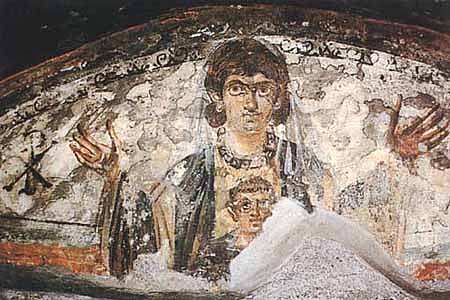
Virgin and Child. Wall painting from the early catacombs, Rome, 4th century.: One of the most common Christian themes is that of the Virgin Mary holding the infant Jesus.
Buddhist Art
Buddhist art originated on the Indian subcontinent following the historical life of Siddhartha Gautama, also known as Gautama Buddha, in the sixth to fifth century BCE, evolving via contact with other cultures as it spread throughout Asia and the world. Buddhist art followed believers as the dharma spread, adapted, and evolved in each new host country. It developed to the north through Central Asia and into Eastern Asia to form the Northern branch of Buddhist art and to the east as far as Southeast Asia to form the Southern branch of Buddhist art. In India, Buddhist art flourished and even influenced the development of Hindu art, while Tibetan Buddhist art was created as a meditation practice. An important example of Tibetan meditation art is the sand mandala , made and used by monks for meditation.
Thematically, Buddhist art is typically comprised of devotional works depicting mythology and narratives associated with the Buddha and bodhisattvas . There is great variation in the types of Buddhist art as the religion is so vast. Some Buddhist art contains animist themes, meaning the depiction of natural elements (animals, nature, earth) as spiritual entities. The creation of art has traditionally been considered both a meditation itself, as well as a method to produce an object to aid others in meditation. Works are rarely, if ever, signed by the artist or group of artists, as the art-making process is considered sacred and communal.
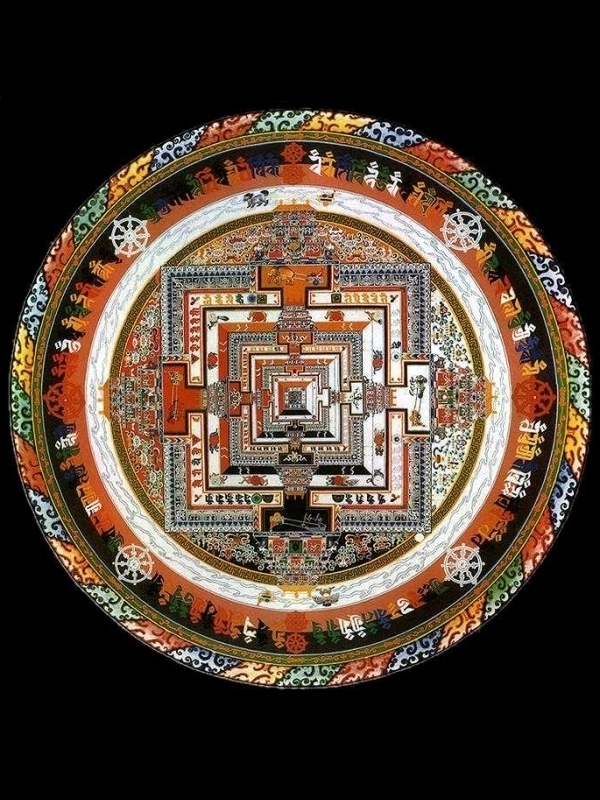
Sand mandala: An example of Tibetan meditation art is the sand mandala, made by monks and used in meditation.
Islamic Art
Islamic art prohibits representational images in religious art, and evolved to be comprised mainly of calligraphic decorations and repetitive geometric patterns. Intended to express the ideals of order and of nature, these geometric patterns are used to adorn religious architecture, carpets, manuscripts, and other art objects. Sacred Islamic art reflects a worldview focused on spiritual essence as opposed to physical form.
Calligraphy is the most highly regarded and most fundamental element of Islamic art. The employment of calligraphy as ornament had a definite aesthetic appeal but often also included an underlying talismanic component. Geometric patterns make up one of the three non-figurative types of decoration in Islamic art, which also includes calligraphy and vegetal patterns. Abstract designs not only adorn the surfaces of monumental Islamic architecture but also function as the major decorative element on a vast array of objects of all types.
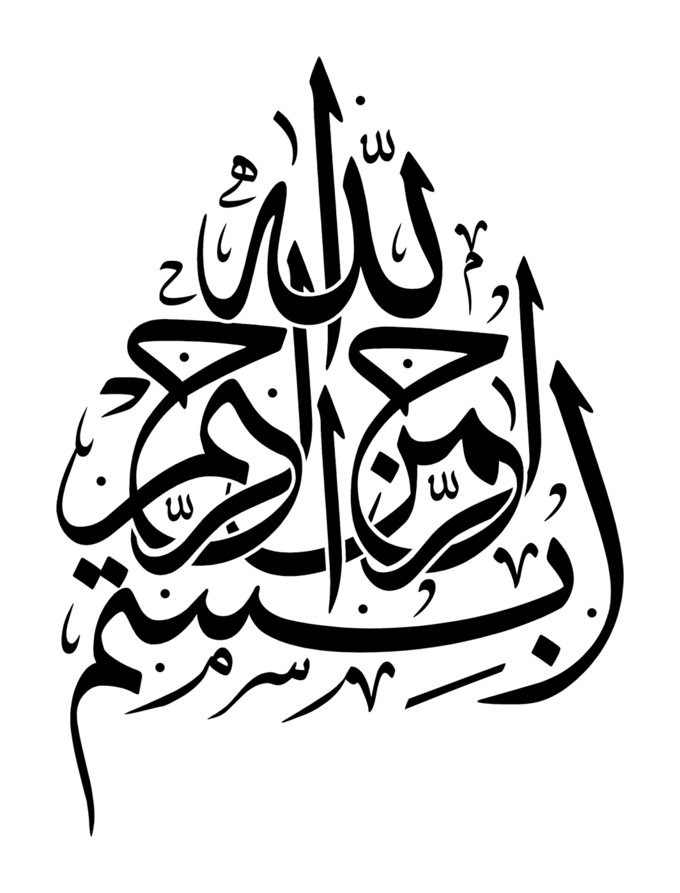
Islamic calligraphy: Eighteenth century writing in Ottoman calligraphy, depicting the phrase “In the name of God, Most Merciful, Most Gracious”.
The Market
The key components of the art market are the gallery, curator, dealer, consultant, and collector.
Learning Objectives
Summarize the roles of the gallery, curator, dealer, consultant, and collector in the art market
Key Takeaways
Key Points
- The art market is an economic ecosystem that relies not only on supply and demand, but also on the fabrication of a work’s predicted future monetary and/or cultural value .
- The primary art market refers to art that enters the market for the first time. The secondary market refers to artworks that have been sold at least once before.
- An art dealer is a person or company who buys and sells works of art.
- Art galleries are commercial or privately funded businesses that deal in artworks, typically made by contemporary artists.
- The curator is the manager or director of the gallery who traditionally programs the space and organizes art shows.
- Art fairs act as conventions or large-scale shows where galleries display the work of select artists whom they represent.
Key Terms
- nonprofit:An organization that exists for reasons other than to make a profit, such as a charitable, educational, or service organization.
- curator:A person who manages, administers, or organizes a collection, either independently or employed by a museum, library, archive, or zoo.
The art market is an economic ecosystem that relies not only on supply and demand, but on the fabrication of a work’s predicted future monetary and/or cultural value. The art market can appear somewhat unclear, since artists do not make art with the sole intention of selling it, and buyers often have no idea of the value of their purchase.
The art market is made up of two parts: the primary market and the secondary market. The primary art market refers to art that enters the market for the first time, while the secondary market refers to artworks that have been sold at least once before.
Once a work is sold, it enters the secondary market and the price at which it sold has a direct influence on its subsequent price. For example, the Picasso painting Garçon à la Pipe sold for $104.2 million at auction, thereby setting its worth at $104.2 million. Supply and demand affects the secondary market more than the primary market, as contemporary art with no market history relies on speculative analysis to determine its value.
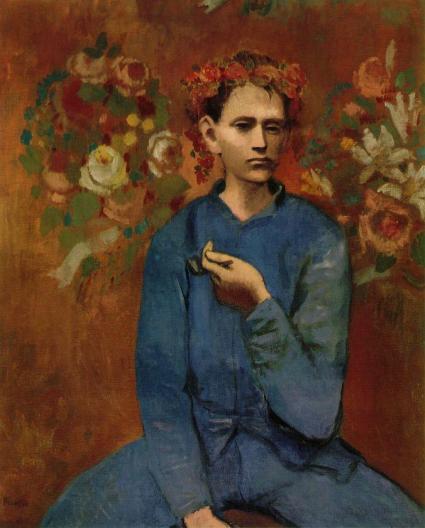
Picasso, Garçon à la Pipe, 1905: Picasso’s “Garçon à la Pipe sold for, and is thereby valued at, $104.2 million.
The important players in the art market are the gallery, curator, dealer, consultant, and collector. Art galleries are commercial or privately funded businesses that deal in artworks, made by contemporary or historical artists. Nonprofit galleries are typically a step above commercial galleries, and include museums and galleries that are funded by the government or charity that do not sell artwork, such as the Tate Modern.
The curator is generally the manager of the gallery and the person who programs the space and organizes art shows. Curators at commercial galleries may have the responsibility of selling work, while those at museums generally maintain the organizational aspects of exhibitions.
Art dealers are persons or companies who buy and sell works of art. They typically seek out artists to represent while simultaneously building relationships with collectors and museums to whom they might be able to sell the work. Dealers are often able to anticipate market trends, and some prominent dealers might be able to influence the taste of the market. Many dealers specialize in a particular style , region, or time period and travel internationally to exhibitions, auctions, artists’ studios, and art fairs to pick up new work. An example of a highly notable art dealer is Larry Gagosian, who also owns Gagosian Gallery, a highly influential art gallery.
Art fairs act as conventions or large-scale shows where galleries display the work of select artists whom they represent and are important to the structure of the contemporary art market. Prominent art fairs include Art Basel, Scope, Frieze Art Fair, NADA, and the Armory Show. The tradition of selling art at auction dates back to the 17th century and continues to thrive today. Art auctions deal in the most highly valued of art, such as works by Picasso, Manet, Jeff Koons, and Andy Warhol. The leading auction houses are Christie’s and Sotheby’s.
National Pride
Art can be used to advance nationalistic goals by providing a state or nation with political and social legitimacy.
Learning Objectives
Illustrate the relationship between certain types of artwork and national pride
Key Takeaways
Key Points
- Romantic nationalism refers to the phenomenon by which a state derives power from the unity of those it governs, whether it be through culture , religion, customs, language, or race.
- Romantic nationalism was a key component of Romanticism as well as certain post-Enlightenment philosophies.
- National anthems, national epics, and national treasures are part of the language of Romantic nationalism, and date back to the 18th and 19th centuries.
- Today, cultural heritage—both tangible and intangible—is regarded as highly valuable.
- A “national treasure” refers to shared culture which has been deemed exceptionally valuable.
- Governments influence the artistic output of their regions by presenting grants and awards to artists whose careers they wish to support.
Key Terms
- worldview:The totality of one’s beliefs about reality.
- national treasure:A person, place, or object that is deemed of great value to an entire nation, usually due to its cultural significance.
Art can be used to advance nationalistic goals by providing a state or nation with political and social legitimacy. “Romantic nationalism” refers to the phenomenon by which a state derives power from the unity of those it governs, whether it be through culture, religion, customs, language, or race. Romantic nationalism was a key component of Romanticism as well as certain post-Enlightenment philosophies that focused on the development of national language, folklore, and traditional customs. This form of nationalism arose in reaction to imperial and dynastic hegemony , which acquired legitimacy not from the bottom-up but from the top-down; in other words, from the authority down to the people. National anthems, national epics, and national treasures are part of the language of Romantic nationalism, and date back to the 18th and 19th centuries.
After the 1870s, Romantic nationalism became a very familiar movement in the arts that allowed for a form of reinterpretation of the past, without being considered merely historicist. Nationalist movements for the separation of Finland and the kingdom of Bavaria from Germany proved successful, Czech and Serb nationalism created conflict, Welsh and Irish tongues experienced a poetic revival, and the Zionist movement both revived Hebrew and began immigration to Israel. In the first few decades of the 20th century, Romantic nationalism had exerted an important influence on political events. The belief that nation states forming around unities in culture and ethnicity was in some sense “natural” was prominently held. After the Second World War, however, Romantic nationalism took on a darker tone .
Some degree of art-based national pride still exists today. The age-old notion of the state gaining political prowess through its artistic output still holds true. Cultural heritage—both tangible and intangible—is regarded as highly valuable. It is not uncommon for museums and art galleries to be owned by the state, thereby imparting biased and/or nationalistic world views on exhibitions. A “national treasure” refers to shared culture which has been deemed exceptionally valuable and could be a skilled musician, such as Yo-Yo Ma, or a cultural object of great value , such as Britain’s Bayeux tapestry . Governments influence the artistic output of their regions by presenting grants and awards to artists whose careers they wish to support—a model which is not unlike the dynastic patronage common throughout Europe in the past.
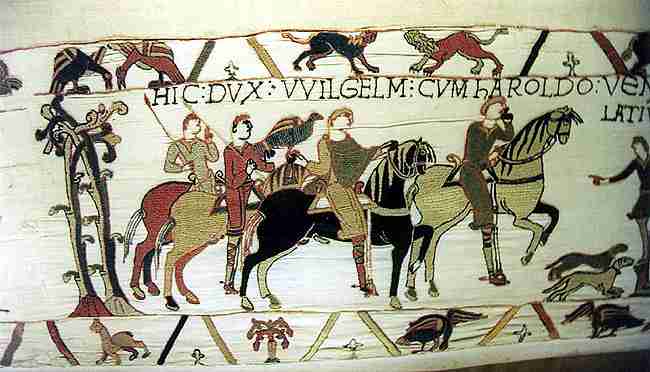
Bayeux Tapestry: The Bayeux Tapestry is an embroidered cloth—not an actual tapestry—nearly 70 metres (230 ft) long, which depicts the events leading up to the Norman conquest of England concerning William, Duke of Normandy and Harold, Earl of Wessex (later King of England) and culminating in the Battle of Hastings.
Museums and Private Collections
Museums and private collections are engaged in both the collection and display of works of art.
Learning Objectives
Discuss the history and role of museums and private collections in the consumption of art
Key Takeaways
Key Points
- Early museums began as the private collections of wealthy families and individuals.
- “Cabinets of curiosity,” or cabinets that held collections of artifacts and art objects, were the beginnings of museums and private collections.
- The majority of significant museums were opened to the public in the 18th century Enlightenment Era, such as the Louvre and the Hermitage Museum.
- Numerous art works in museums today were donated from private collections.
- It is not uncommon to see a note next to a work of art in a temporary museum exhibition, stating that it is on loan from a particular private collection.
Key Terms
- engaged:Attached to a wall or sunk into it halfway.
- Enlightenment:A philosophical movement in 17th- and 18th-century Europe; the Age of Enlightenment, or the Age of Reason, emphasized rationalism.
- conservation:The act of preserving, guarding, or protecting; the keeping (of a thing) in a safe or entire state; preservation.
Museums are institutions that collect art objects and make them available for public viewing through either permanent or temporary exhibitions. A museum does not sell works of art, but essentially holds them in public trust, and engages in varying levels of education and conservation practices. Private collections are privately owned works of art which may or may not be available for viewing by the public. Museums and private collections are both engaged in the collection and display of works of art.
Early museums began as the private collections of wealthy families and individuals. Originally, only nobility collected art, but soon the wealthy classes began to adopt the habit of collecting and displaying archaeological and art objects in their salons and living rooms. “Cabinets of curiosity,” or cabinets that held these collections of artifacts and art objects, became commonplace, and were the beginnings of museums and private collections. Often, these private collections were available for viewing by the so-called “respectable” public, but the majority did not become open to the public until the 18th century.
The majority of significant museums were opened to the public in the 18th century, or the Enlightenment era, a time known for its pursuit and dissemination of knowledge throughout society. The arts were especially important during the Enlightenment and viewed as a deeply noble pursuit. The Grand Tour , which became very popular during this time, solidified the habit of collecting works for display from these trips abroad. Many of the most significant private collections of art were opened to the public in the 18th century, such as the Uffizi gallery in Florence, Italy; The Louvre in Paris, France; and The Hermitage Museum, founded in 1764 by Catherine the Great.
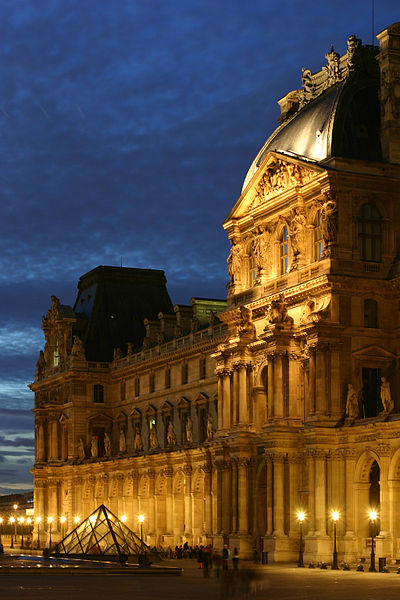
The Louvre, Paris: The Louvre museum in Paris was a private collection opened to the public in the 18th century.
Numerous art works in museums today were in fact donations from private collections. In addition, commonly a note is posted next to a work of art in a temporary museum exhibition stating that it is on loan from a particular private collection. Currently, some private collections remain private, while some are available for public viewings. The Frick Collection in New York City is one of the preeminent small art museums in the city. Housed in the mansion of its owner, Henry Clay Frick, the collection includes old master paintings by Jan van Eyck, Fragonard, Rembrandt, and others.
Preservation and Restoration
Preservation and restoration is a profession devoted to the conservation of cultural heritage, such as works of art, for future generations.
Learning Objectives
Examine the profession of preserving and restoring art
Key Takeaways
Key Points
- The goal of the conservator is to attempt to maintain cultural heritage objects as close to their original condition as possible, for as long as possible.
- The tradition of conservation is considered by most to have begun in 1565, with the restoration of the Sistine Chapel frescoes .
- Today, all museums employ teams of conservators to keep their collections up to date, conduct frequent tests, and engage in analysis and documentation.
- Conservators are often involved in what is termed “preventative conservation,” which refers to protecting art and cultural works from damage from environmental conditions, such as temperature, humidity, and exposure to light.
- A guiding principle of conservation is the idea of “reversibility”; that is, any intervention with the object should be fully reversible.
- “Interventive conservation” refers to any act that involves a direct interaction between the conservator and the cultural material, such as cleaning, stabilizing, repairing, or replacing of parts.
Key Terms
- fresco:In painting, the technique of applying water-based pigment to wet or fresh lime mortar or plaster.
- conservator:A professional who works on the conservation and restoration of objects, particularly artistic objects.
Preservation and restoration is a profession devoted to the conservation of cultural heritage, such as works of art, for future generations. The activities involved in this profession include examination, documentation, treatment, and preventative conservation. The goal of the conservator is to attempt to maintain cultural heritage objects as close to their original condition as possible, for as long as possible. The conservator acts as a sort of steward for these objects, which range from archaeological to artistic.
The tradition of conservation is considered by most to have begun in 1565, with the restoration of the Sistine Chapel frescoes. During the 19th century, the fields of science and art became somewhat intertwined, and scientific processes were used to care for artistic objects. Today, all museums employ teams of conservators to keep their collections up-to-date, conduct frequent tests, and engage in analysis and documentation. In addition, numerous organizations create standardized methodologies for the conservation of art objects, such as the International Institute for the Conservation of Historic and Artistic Works and the American Institute for Conservation.

A painting, before and after restoration: This before-and-after image of a painting and frame exemplifies how art restoration can restore an art work to its original state.
The conservator’s activities are guided by ethical standards. They must choose if, when, and how to alter a work of art in order to bring it closer to its original state. Since the original state is often beyond the conservator’s lifetime, a certain degree of guesswork is required. Conservators are often involved in what is termed “preventative conservation,” which refers to protecting art and cultural works from damage from environmental conditions, such as temperature, humidity, and exposure to light. This is why, for example, it is common to see textiles or photography exhibited in dimly-lit galleries.
A guiding principle of conservation is the idea of “reversibility”; that is, any intervention with the object should be fully reversible, and the object should be able to be returned to its original state. “Interventive conservation” refers to any act that involves a direct interaction between the conservator and the cultural material, such as cleaning, stabilizing, repairing, or replacing of parts. The conservator is required to fully justify any work of this sort and to complete documentation of the process before and after. Examples of interventive conservation include securing flaking paint and the tinted varnish treatment, whereby the restorer applies a tinted varnish over the original varnish, giving the illusion that spots on a work have been repainted.
Conflicts
Destruction, mislabeling, appropriation, and repossession can contribute to conflicts surrounding the preservation of art.
Learning Objectives
Summarize the events that can contribute to conflicts in terms of the preservation of art
Key Takeaways
Key Points
- War, political unrest, accidents, and disaster are the typical outside factors that contribute to the non- preservation of art.
- Looting refers to when art is stolen during such times of conflict.
- Art repatriation refers to the process of returning artworks to their rightful owners.
- The use, or appropriation of, art has inspired much controversy and contributed to cultural subjugation. A prime example of appropriation and subjugation is seen in the appropriation of sacred Native American images, iconography , and sculptures for commercial use by non-natives.
- Copyright can give the creator of an original work exclusive rights to it, usually for a limited time.
Key Terms
- Copyright:The right by law to be the entity which determines who may publish, copy, and distribute a piece of writing, music, picture, or other work of authorship.
- appropriation:The use of pre-existing objects or images with little or no transformation applied to them.
While institutions and owners do their best to preserve works of art, it is not uncommon for conflicts to arise due to issues related to ownership, human error, destruction, and appropriation. War, political unrest, accidents, and disaster are the typical outside factors that contribute to preservation conflicts when it comes to works of art.
Ownership conflicts are common, especially during times of unrest, such as war, when there is a higher potential for unethical behavior. Art is often stolen, or looted, during periods of conflict, as well as destroyed. Plunder, appropriation, and spoliation are related terms that describe the process of looting. During World War II, the Nazis looted a lot of European art, much of which was eventually repatriated, or returned to, its rightful owners.
Appropriation is a complex issue in art. The appropriation of Native American iconography, sacred images, and sculptures for commercial use by non-natives has been a source of controversy, contributing to cultural subjugation. The Kachina doll, for example, is a sacred Hopi sculpture that was traditionally meant to be seen only during specific Hopi ritual events. Many commercial replicas have been created to sell to tourists, altering the original intent of the object.
Appropriation has been embraced in certain Western art movements. Dadaist and Surrealist works, for example, typically utilize a great deal of appropriation, as seen in Marcel Duchamp’s L.H.O.O.Q.
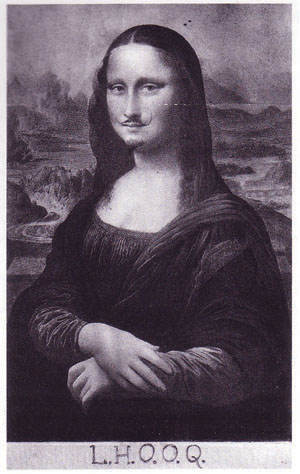
Marcel Duchamp, L.H.O.O.Q., 1919: L.H.O.O.Q. is an example of appropriation deemed acceptable in art.
A copyright can give the creator of an original work exclusive rights to it, usually for a limited time. However, after that time is up, the work of art might be appropriated and used by others, thereby creating conflict. The internet has further complicated issues surrounding ownership and appropriation, especially in art.
- Curation and Revision. Provided by: Boundless.com. License: CC BY-SA: Attribution-ShareAlike
- Kalachakra. Provided by: Wikipedia. Located at: en.Wikipedia.org/wiki/File:Kalachakra.jpg. License: Public Domain: No Known Copyright
- VirgenNino. Provided by: Wikipedia. Located at: en.Wikipedia.org/wiki/File:VirgenNino.jpg. License: Public Domain: No Known Copyright
- Basmalah-1wm. Provided by: Wikipedia. Located at: en.Wikipedia.org/wiki/File:Basmalah-1wm.png. License: Public Domain: No Known Copyright
- Religious art. Provided by: Wikipedia. Located at: en.Wikipedia.org/wiki/Religious_art. License: CC BY-SA: Attribution-ShareAlike
- iconoclasm. Provided by: Wiktionary. Located at: en.wiktionary.org/wiki/iconoclasm. License: CC BY-SA: Attribution-ShareAlike
- Boundless. Provided by: Boundless Learning. Located at: www.boundless.com//art-history/definition/vajra. License: CC BY-SA: Attribution-ShareAlike
- Boundless. Provided by: Boundless Learning. Located at: www.boundless.com//art-history/definition/religious-art--2. License: CC BY-SA: Attribution-ShareAlike
- Phurba. Provided by: Wikipedia. Located at: en.Wikipedia.org/wiki/Phurba. License: CC BY-SA: Attribution-ShareAlike
- Garu00e7on u00e0 la pipe. Provided by: Wikipedia. Located at: en.Wikipedia.org/wiki/File:Gar%C3%A7on_%C3%A0_la_pipe.jpg. License: Public Domain: No Known Copyright
- Garu00e7on u00e0 la pipe. Provided by: Wikipedia. Located at: en.Wikipedia.org/wiki/Gar%C3%A7on_%C3%A0_la_pipe. License: CC BY-SA: Attribution-ShareAlike
- International Art Markets. Provided by: Wikipedia. Located at: en.Wikipedia.org/wiki/International_Art_Markets. License: CC BY-SA: Attribution-ShareAlike
- Art dealer. Provided by: Wikipedia. Located at: en.Wikipedia.org/wiki/Art_dealer. License: CC BY-SA: Attribution-ShareAlike
- The Armory Show (art fair). Provided by: Wikipedia. Located at: en.Wikipedia.org/wiki/The_Armory_Show_(art_fair). License: CC BY-SA: Attribution-ShareAlike
- Art valuation. Provided by: Wikipedia. Located at: en.Wikipedia.org/wiki/Art_valuation. License: CC BY-SA: Attribution-ShareAlike
- Art auction. Provided by: Wikipedia. Located at: en.Wikipedia.org/wiki/Art_auction%23Contemporary_market_structure. License: CC BY-SA: Attribution-ShareAlike
- Contemporary art gallery. Provided by: Wikipedia. Located at: en.Wikipedia.org/wiki/Contemporary_art_gallery. License: CC BY-SA: Attribution-ShareAlike
- curator. Provided by: Wiktionary. Located at: en.wiktionary.org/wiki/curator. License: CC BY-SA: Attribution-ShareAlike
- nonprofit. Provided by: Wiktionary. Located at: en.wiktionary.org/wiki/nonprofit. License: CC BY-SA: Attribution-ShareAlike
- Bayeux hawking. Provided by: Wikipedia. Located at: en.Wikipedia.org/wiki/File:Bayeux_hawking.jpg. License: Public Domain: No Known Copyright
- National treasure. Provided by: Wikipedia. Located at: en.Wikipedia.org/wiki/National_treasure. License: CC BY-SA: Attribution-ShareAlike
- Culture of the United States. Provided by: Wikipedia. Located at: en.Wikipedia.org/wiki/Culture_of_the_United_States%23The_arts. License: CC BY-SA: Attribution-ShareAlike
- Cultural production and nationalism. Provided by: Wikipedia. Located at: en.Wikipedia.org/wiki/Cultural_production_and_nationalism. License: CC BY-SA: Attribution-ShareAlike
- Romantic nationalism. Provided by: Wikipedia. Located at: en.Wikipedia.org/wiki/Romantic_nationalism. License: CC BY-SA: Attribution-ShareAlike
- worldview. Provided by: Wiktionary. Located at: en.wiktionary.org/wiki/worldview. License: CC BY-SA: Attribution-ShareAlike
- national treasure. Provided by: Wiktionary. Located at: en.wiktionary.org/wiki/national_treasure. License: CC BY-SA: Attribution-ShareAlike
- Le Louvre - Aile Richelieu. Provided by: Wikipedia. Located at: en.Wikipedia.org/wiki/File:Le_Louvre_-_Aile_Richelieu.jpg. License: CC BY-SA: Attribution-ShareAlike
- Private collection. Provided by: Wikipedia. Located at: en.Wikipedia.org/wiki/Private_collection. License: CC BY-SA: Attribution-ShareAlike
- Museum. Provided by: Wikipedia. Located at: en.Wikipedia.org/wiki/Museum. License: CC BY-SA: Attribution-ShareAlike
- Frick Collection. Provided by: Wikipedia. Located at: en.Wikipedia.org/wiki/Frick_Collection. License: CC BY-SA: Attribution-ShareAlike
- conservation. Provided by: Wikipedia. Located at: en.Wikipedia.org/wiki/conservation. License: CC BY-SA: Attribution-ShareAlike
- engaged. Provided by: Wiktionary. Located at: en.wiktionary.org/wiki/engaged. License: CC BY-SA: Attribution-ShareAlike
- Enlightenment. Provided by: Wiktionary. Located at: en.wiktionary.org/wiki/Enlightenment. License: CC BY-SA: Attribution-ShareAlike
- Art_Restoration_Painting_and_Frame_Restoration_before_and_after_Oliver_Brothers_Art_Restoration_Boston.jpg. Provided by: Wikipedia. Located at: upload.wikimedia.org/Wikipedia/commons/e/eb/Art_Restoration,_Painting_and_Frame_Restoration,_before_and_after,_Oliver_Brothers_Art_Restoration,_Boston.jpg. License: CC BY-SA: Attribution-ShareAlike
- Conservation-restoration. Provided by: Wikipedia. Located at: en.Wikipedia.org/wiki/Conservation-restoration. License: CC BY-SA: Attribution-ShareAlike
- Art restoration. Provided by: Wikipedia. Located at: en.Wikipedia.org/wiki/Art_restoration. License: CC BY-SA: Attribution-ShareAlike
- New media art preservation. Provided by: Wikipedia. Located at: en.Wikipedia.org/wiki/New_media_art_preservation. License: CC BY-SA: Attribution-ShareAlike
- fresco. Provided by: Wiktionary. Located at: en.wiktionary.org/wiki/fresco. License: CC BY-SA: Attribution-ShareAlike
- conservator. Provided by: Wiktionary. Located at: en.wiktionary.org/wiki/conservator. License: CC BY-SA: Attribution-ShareAlike
- Marcel Duchamp Mona Lisa LHOOQ. Provided by: Wikipedia. Located at: en.Wikipedia.org/wiki/File:Marcel_Duchamp_Mona_Lisa_LHOOQ.jpg. License: Public Domain: No Known Copyright
- Cultural heritage. Provided by: Wikipedia. Located at: en.Wikipedia.org/wiki/Cultural_heritage. License: CC BY-SA: Attribution-ShareAlike
- Moral rights (copyright law). Provided by: Wikipedia. Located at: en.Wikipedia.org/wiki/Moral_rights_(copyright_law). License: CC BY-SA: Attribution-ShareAlike
- Looted art. Provided by: Wikipedia. Located at: en.Wikipedia.org/wiki/Looted_art. License: CC BY-SA: Attribution-ShareAlike
- Appropriation (art). Provided by: Wikipedia. Located at: en.Wikipedia.org/wiki/Appropriation_(art). License: CC BY-SA: Attribution-ShareAlike
- Cultural property. Provided by: Wikipedia. Located at: en.Wikipedia.org/wiki/Cultural_property. License: CC BY-SA: Attribution-ShareAlike
- Copyright. Provided by: Wikipedia. Located at: en.Wikipedia.org/wiki/Copyright. License: CC BY-SA: Attribution-ShareAlike
- appropriation. Provided by: Wiktionary. Located at: en.wiktionary.org/wiki/appropriation. License: CC BY-SA: Attribution-ShareAlike

